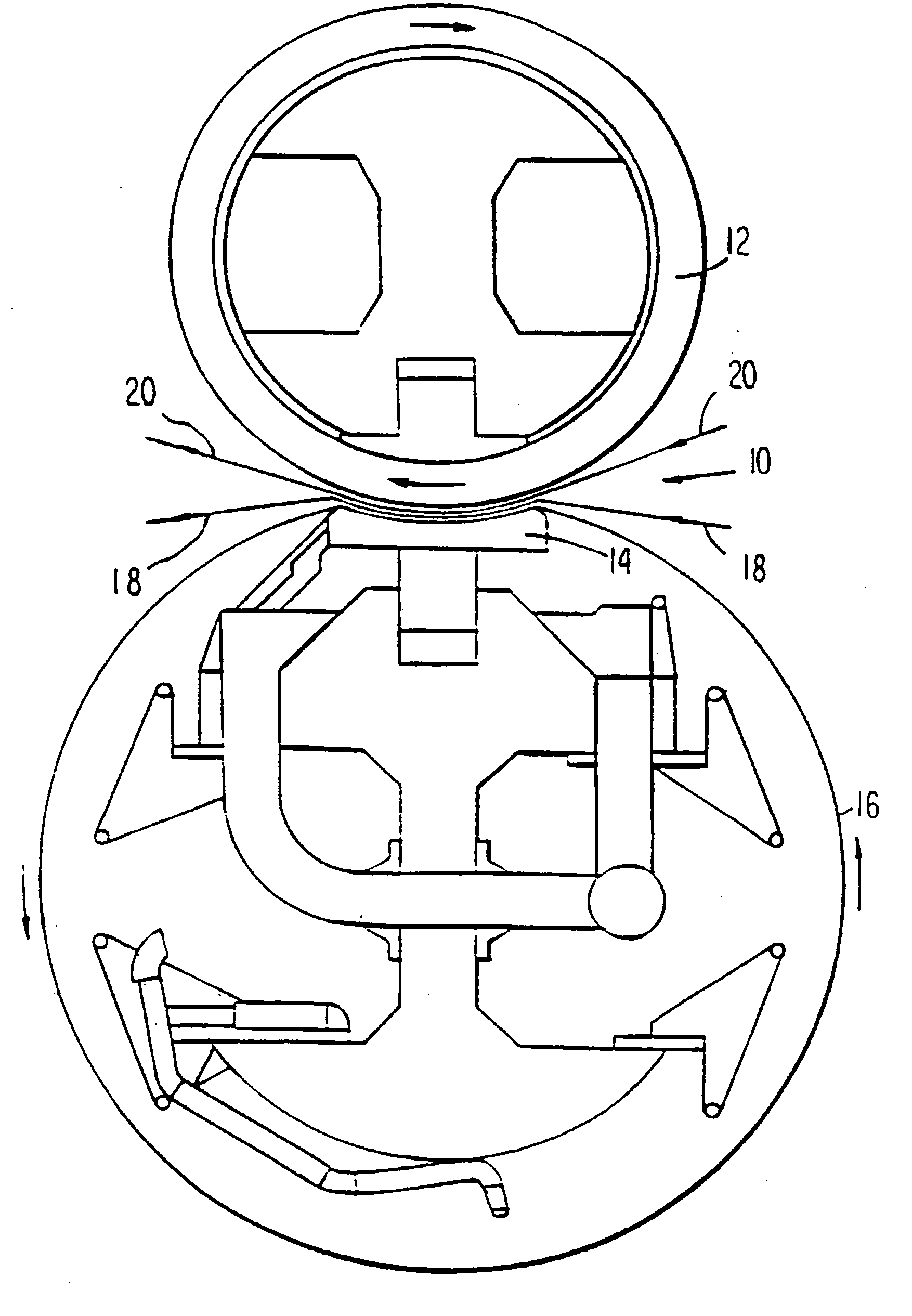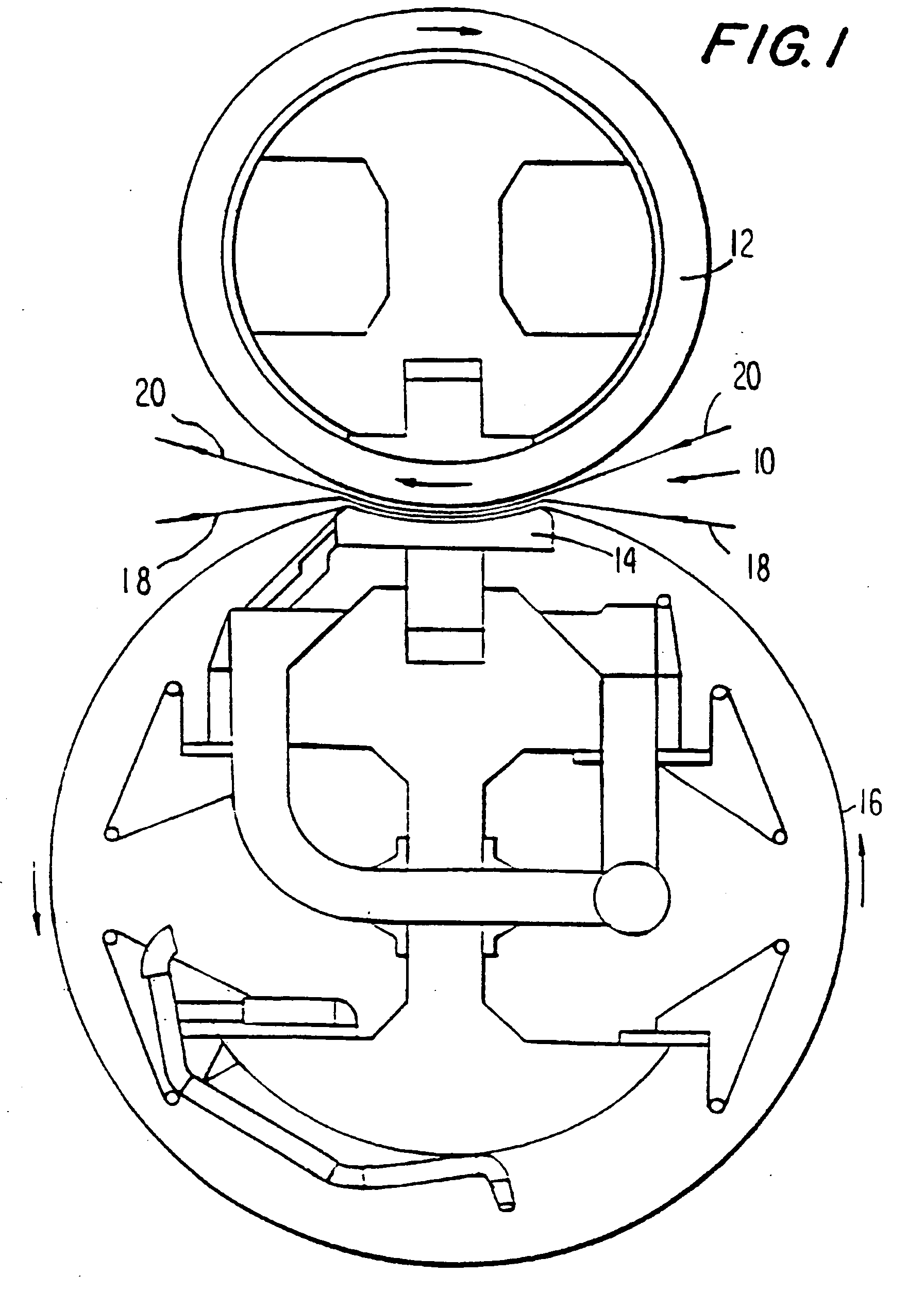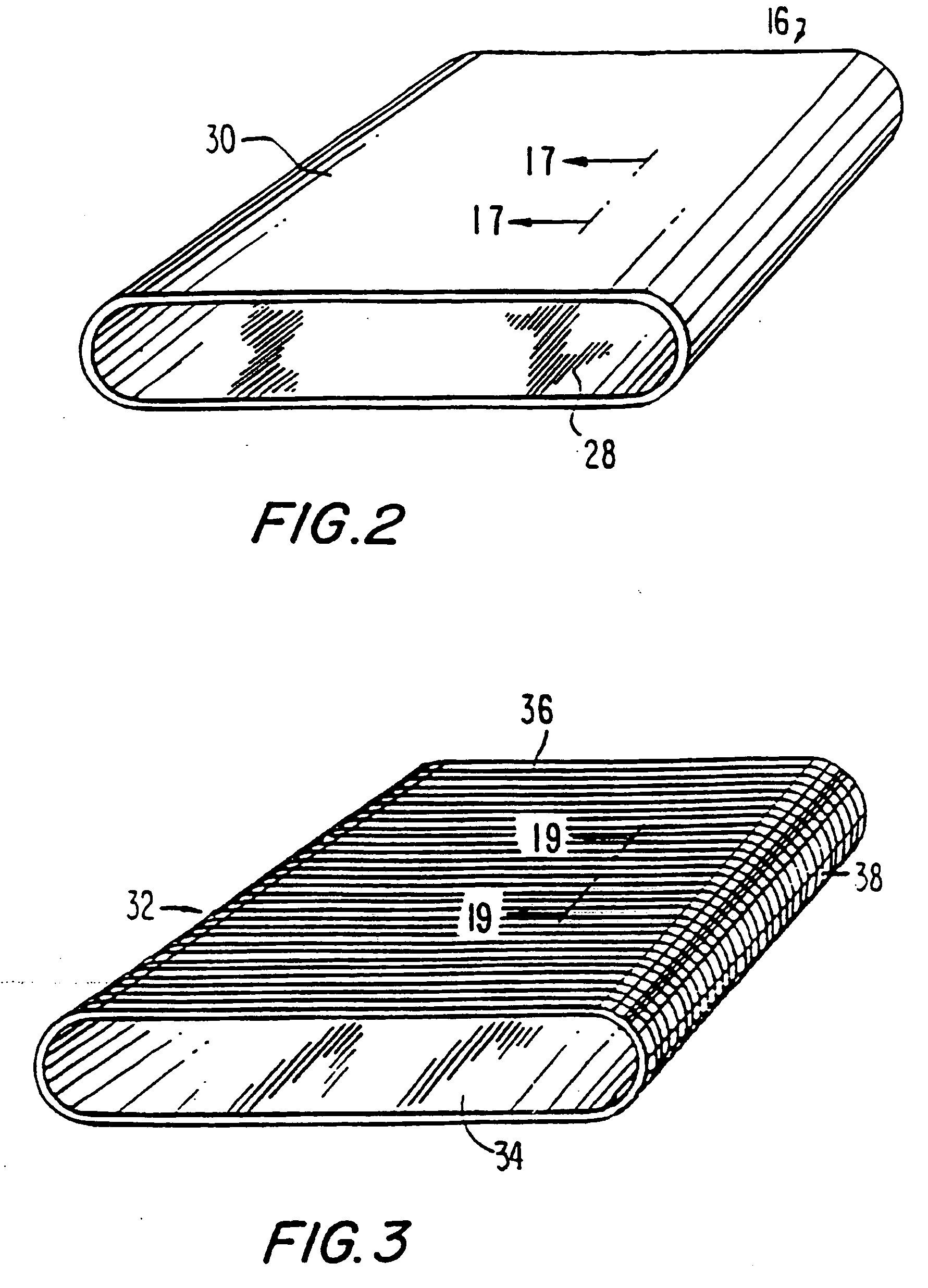Belts and roll coverings having a nanocomposite coating
a nano-composite coating and belt technology, applied in the field of papermaking arts, can solve the problems of cracking of the coating, belts subjected to environmental stress and abrasion, compression and heat, and other belts used for transferring paper webs in the papermaking process, so as to improve the resistance to flex fatigue, improve the resistance to crack propagation, and improve the wear characteristics
- Summary
- Abstract
- Description
- Claims
- Application Information
AI Technical Summary
Benefits of technology
Problems solved by technology
Method used
Image
Examples
example 1
[0081] A sample of an unmodified polyurethane resin system used as a conventional polyurethane system was made from a polyether MDI prepolymer. The curative was a blend of conventional chain extenders selected from the class of aromatic amines and diols. The blend composition was selected in such a way to give adequate working life (“potlife”) and hardness when mixing in a conventional benchtop laboratory mixer. The curative blend was mixed with the nanoparticles prior to mixing with the prepolymer. The method described herein was also used in Example 2.
[0082] Nano-alumina particles (average particle size 37 nm) were supplied by Nanophase. Zinc Oxide particles (average particle size 36 nm) were also supplied by Nanophase. The supplier also supplied these particles pretreated. “Epoxy silane” treated means that the particle was pretreated with (3-glycidoxypropyl)trimethoxysilane. “Octyl silane” means that the particle was treated with n-octyltriethoxysilane. Cloisite 20A, Cloisite 30...
example 2
[0090] The caliper of the prepared samples was set such that the samples would crack at a measurable rate within a reasonable period of time, e.g., within a test segment of 50,000 cycles. The theoretical maximum tensile strain was 29%-31%. The nature of the test does not allow one to determine the dynamic modulus in the course of testing. However, the relative stiffness or hardness of the resin can be assessed using an analog or digital Shore C Durometer, per ASTM D-2240.
[0091] The FCG behavior may be gleaned from a plot of crack length versus number of flex cycles, or from a tabulation of the crack lengths at some given number of cycles. The Ross Flex data reflects the average of 4 replicates (FIG. 5).
[0092] The hardness reflects the average of results generated on 6 replicates, shown in Table 4.
TABLE 4Average Hardness of Modified and Unmodified MaterialsAverage Crack LengthDigital ShoreCompositionat 5000 cycles, mmC0 vol % particles25.469.61.58 vol % uncoated alumina10.967.91....
PUM
| Property | Measurement | Unit |
|---|---|---|
| Fraction | aaaaa | aaaaa |
| Fraction | aaaaa | aaaaa |
| Percent by mass | aaaaa | aaaaa |
Abstract
Description
Claims
Application Information
 Login to View More
Login to View More - R&D
- Intellectual Property
- Life Sciences
- Materials
- Tech Scout
- Unparalleled Data Quality
- Higher Quality Content
- 60% Fewer Hallucinations
Browse by: Latest US Patents, China's latest patents, Technical Efficacy Thesaurus, Application Domain, Technology Topic, Popular Technical Reports.
© 2025 PatSnap. All rights reserved.Legal|Privacy policy|Modern Slavery Act Transparency Statement|Sitemap|About US| Contact US: help@patsnap.com



